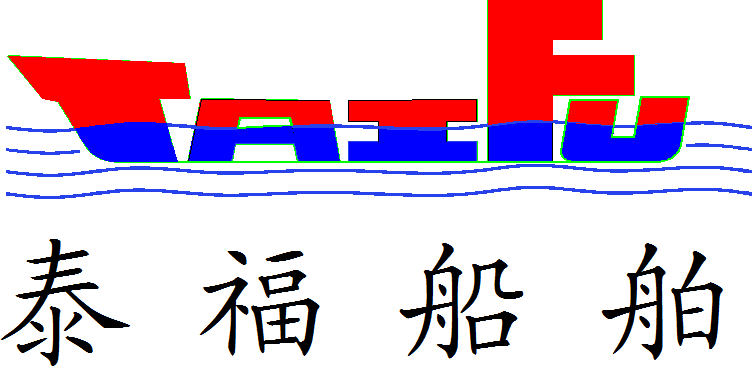
Sailing maintenance details
Release time:
2022-05-24 09:14
Source:
1. season maintenance
1. Hull maintenance
(1) Daily cleaning: Rinse the surface of the sailboat with fresh water and wipe it with a rag.
(2) Periodic cleaning: With the running time of the sailboat engine as the cycle, the new ship engine is maintained every 10 hours, and then every 100 hours of operation.
Specific measures are as follows:
Use a sponge dipped in a special cleaning agent (equipped according to the ratio) to wipe the hull. For places with serious stains, use a brush to clean the hull under the premise of ensuring that the hull is not damaged. After treatment, use clear water to rinse and wipe off the water stains with deerskin.
(3) Quarterly maintenance:
Clean the hull thoroughly and make a special maintenance material.
2. Clean the glass. After wiping the glass with a clean cloth, scrape the glass.
3. Engine maintenance
For the engine, the quality of the oil directly affects the degree of lubrication in the engine. According to the use and maintenance requirements of the specific engine brand and model, the following items are tested on a daily basis and before the start of the voyage. The engine must be tested and replaced regularly for water and oil. If the engine does not change the oil regularly, after opening the engine, you will find that there are many thick and greasy like asphalt. Greasy is caused by the deterioration and oxidation of oil products caused by frequent oil change, or the quality of oil products is not good. The addition of too little antioxidant causes greasy adhesion to the engine, forming a kind of "calcium oil", causing serious wear of the engine, and the engine that loses lubrication is easy to "seize" and cause the sailboat to break down. Therefore, it is best to carry out engine maintenance and maintenance according to the hours specified by the manufacturer.
Usually pay more attention to whether the engine has abnormal noise, if the engine has abnormal noise, it should be repaired in time. Whether there is a problem with the oil circuit, the water circuit, or the ignition system and fan.
When the water temperature is high, the engine oil becomes thinner, because the oil is also cooled by water. Once the oil becomes thinner, the friction gap in the engine becomes smaller at this time, which will produce a metal impact sound similar to "da da da da. If the water temperature is too high and is not adjusted in time, it will cause the oil temperature to be too high and reach the boiling point of the oil to evaporate and produce the burning smell of the oil.
Since most of the cylinder covers of engines are made of aluminum alloy, and the purpose of using aluminum alloy engines is to better help the vehicle's engine dissipate heat, it is very sensitive to temperature changes. Once the water temperature reaches a high temperature of more than 100 degrees or even 200 degrees, the aluminum alloy engine is prone to curvature and cause water leakage. A large amount of water may be poured into the engine and cause accidents such as engine flameout and breakdown.
Regularly check the level of oil in the engine.
Regularly check coolant status.
Check the fan belt regularly.
Check the seawater filter every 25 hours in the operating state.
Check the lubrication level of the nozzle and the steering oil cup.
The first time to replace the engine gasoline filter is 20 hours after starting, and then every 200 hours.
Change the engine oil every 100 hours.
Change the gear oil every 200 hours.
Replace the air filter every 200 hours.
The fuel filter is replaced once a year.
Keep oil clean, water clean, gas clean and body clean. The use of lubricating oil with excellent detergency and dispersion performance and the regular use of gasoline detergent to clean the engine nozzle intake valve and combustion chamber are the primary conditions to extend the life of the engine.
Engine compartment cleaning
Due to the direct contact with the engine, the engine compartment usually has a lot of internal oil pollution. For the cleaning of the engine compartment, an appropriate amount of the prepared cleaning liquid is usually poured into the engine compartment. When the hull sways and shakes with the waves, the cleaning liquid will affect the engine compartment. Thoroughly clean, after cleaning, use the cabin bilge sewage pump to discharge the sewage out of the ship.
4. Battery maintenance
Generally speaking, the batteries on sailboats are maintenance-free, but some methods are still needed to increase the effectiveness and service life of the batteries:
Keep the battery fully charged. This allows the battery to maintain a longer service life;
Check the battery at least once every 30 days;
Regularly clean the battery connector and wiring harness.
Check whether the battery cable is reliably connected to the terminal. Tighten the terminal nut 1/4 turn with a wrench after hand tightening.
Check the electrolyte capacity of each cell in the battery pack. Electrolyte capacity level should be above the scale line. If the liquid level is lower than the scale, add distilled water until the electrolyte reaches the appropriate capacity value. Beware of overfilling the battery box with electrolyte. Put the battery in a cool and dry place when charging for a long time.
Check the battery charge every three months using a hydrometer or voltmeter.
If the specific gravity is lower than 1.225 or the voltage is lower than 12.4, the battery needs to be charged.
5. Antifreeze
Check the maximum and minimum level of the antifreeze indicator box.
6, Daily Sailing Maintenance
Check the components listed below at least once a week (if the ship is operating regularly, check before use): Battery-check the power every week.
Rotate the housing to absorb water-check to prevent marine life and debris remaining.
Propeller shaft-lubricated.
Drive running belt-check condition and check tension.
Related News
The vessel we designed for Middle Eastern client sailing on the sea...
The vessel we designed for Middle Eastern clients sailing on the sea...
4400DWT coastal bulk carrier is successfully launched
4400DWT coastal bulk carrier is successfully launched
10 deck container ships for our UAE client successfully launched
10 deck container ships for our UAE client successfully launched

